May 24, 2025 | 16:29 GMT +7
May 24, 2025 | 16:29 GMT +7
Hotline: 0913.378.918
May 24, 2025 | 16:29 GMT +7
Hotline: 0913.378.918
On 22 March, Mr. Nguyen Xuan Cuong, Minister of Agriculture and Rural Development, worked with the Vietnam Academy of Agricultural Sciences (VAAS) on the research into science and technology for the 2016 – 2020 period, and development orientation for 2021 – 2025.
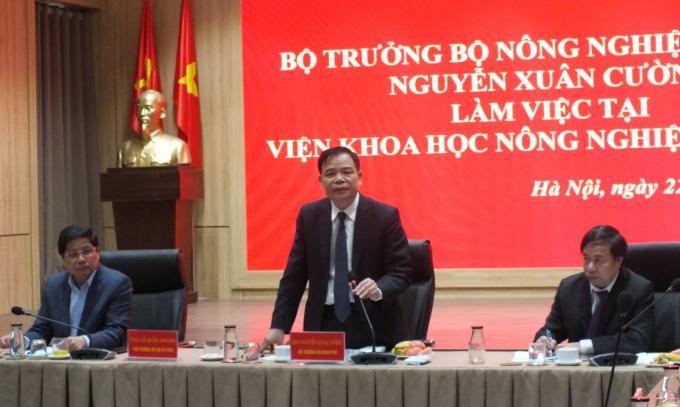
Minister Nguyen Xuan Cuong highly appreciated VAAS's great contributions to the country and its agricultural sector throughout history. Photo: Le Ben.
According to Prof. Dr. Nguyen Hong Son, Director of the VAAS, between 2016 and 2020, the production of plant varieties is a research field that has achieved many excellent results.
For rice production, VAAS's large cultivating areas and increased yield of new rice varieties have led to a surge in its economic value of about VND 15,795 billion per year. In terms of coffee production, its advanced process and techniques applied on an area of 320,000 hectares contributed to the total economic value added of about VND 5,200 billion per annum. In case of cashew, the figure is over VND 4,700 billion, thanks to varieties that the VAAS bred. Meanwhile, per annum the Academy’s tealeaves added VND 1,800 billion, dragon fruits VND 13,000b, mango VND 2,890b, pomelo VND 9,900b, and Xuong Com Vang longan VND 2,219b.
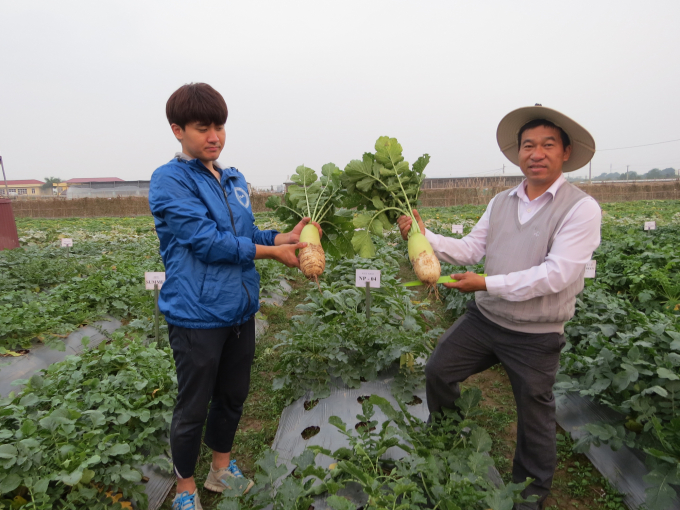
High quality vegetables and fruits varieties were produced by the VAAS, which helped restructure the agricultural sector in recent years. Photo: Le Ben.
Besides, the VAAS has multiple significant achievements in the 5-year period in the application of biotechnology, high technology, and technical advances in the plant protection, soil and crop nutrition; science and technology services, etc.
However, challenges lie ahead for the VAAS, as Prof. Dr. Nguyen Hong Son commented.
Investment in facilities and equipment is still very modest. Researchers’ capacity and qualifications (especially basic research) are not high, and the ability to carry out independent research is limited, in comparison with that in other countries. Quality resources who are able to satisfy increasingly demanding requirements are meagre. The number owned by the Academy are even declining as they are fleeing to other businesses or institutions, both local and foreign, for better income, which contributed to the rise of brain drain that the Academy is facing. The science and technology services offered by the Academy are not profitable as expected. As a public service provider, the Academy is challenged by the autonomous and self-responsible mechanism, especially in building an operational and cooperative mechanism in production, business, and science and technology services in agriculture.
Deputy Minister Le Quoc Doanh added, there have been grave difficulties lying in the protection of breed copyrights, research, and patent copyrights within this field. The launch of commercial products is also no easy task.

Vietnam science and technology research risk lagging behind due to inadequate investment in resources. Photo: TL.
Responding to those challenges, 18 research units under the VAAS have made every effort.
Minister Nguyen Xuan Cuong said, the development potential of our country's agricultural sector is still great, especially in the field of cultivation.
On such basis, the Minister requested the VAAS to proactively innovate and redirect its research activities. For example, for maize, it is necessary to focus on varieties that are for biomass production or animal feed instead of for corn harvest only. More effort should be put into the research and development of high quality vegetable and flower varieties so that those Vietnam-made can replace imported ones. At the same time, for our specialty in particular, the research should serve the purpose of enhancing its quality over quantity.
What’s more, in the future, the focus should be shifted from food security to nutrition security.
In addition, it is wise to study for the whole chain instead of carry out single research on some single stage.
Accordingly, VAAS needs to proactively study the needs and tastes of the market in order to orient their research, and to pay attention to varieties and products that will be high in both demand and value.
Minister Nguyen Xuan Cuong said that priority would be given to medium-term investment, and his Ministry would coordinate with the Ministry of Science and Technology to facilitate the VAAS’ resources in the near future.
Translated by Meagan Phan
![Advanced mariculture – an inevitable trend: [1] Moving offshore](https://t.ex-cdn.com/nongnghiepmoitruong.vn/608w/files/phucpm/2025/05/18/0252-2436-nuoi-bien-6-162148_783.jpg)
(VAN) Mariculture using advanced technology and moving offshore is an inevitable trend, as nearshore areas increasingly reveal limitations.
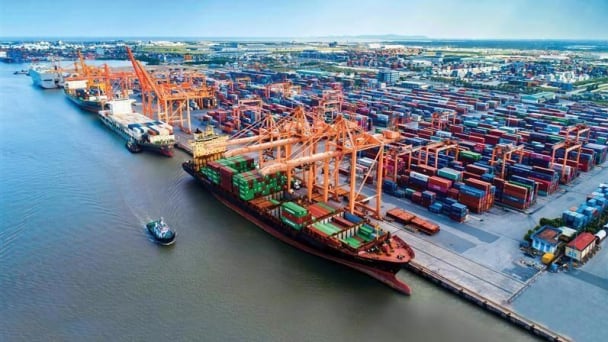
(VAN) South Korea is currently the second-largest investor in Hai Phong in terms of the number of projects (186 projects) and the largest in terms of total registered investment capital, reaching USD 14.2 billion.
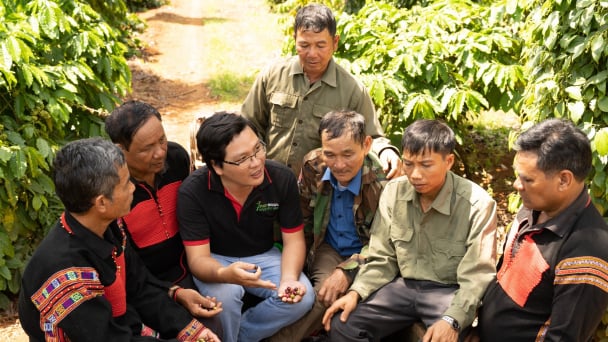
(VAN) As consumers become more environmentally conscious, legal regulations grow increasingly stringent...
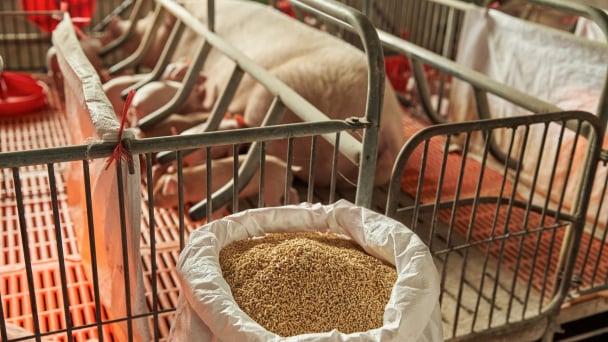
(VAN) CJ Feed&Care officially launched the FCR improvement campaign called “2025 Find Challenge Reach” in April 2025. In Vietnam, this campaign is implemented by CJ Vina Agri.
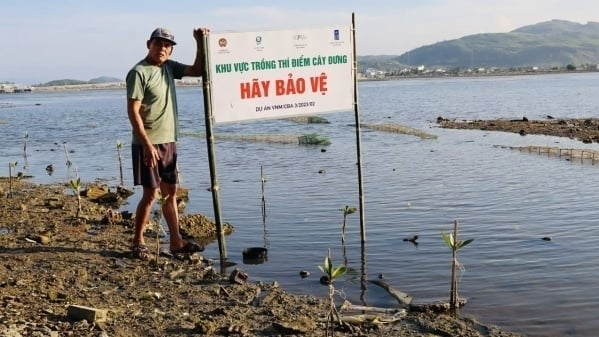
(VAN) The swamp in Pho Thanh is gradually being covered with red mangrove, creating a favorable environment for producing clean, high-quality salt.
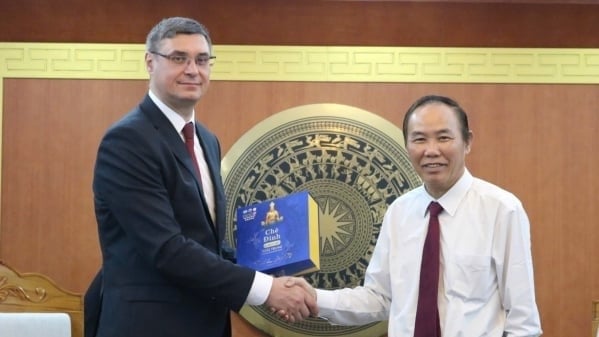
(VAN) The trade turnover of agro-forestry-fishery products is growing significantly, along with investment cooperation commitments that are opening up new development directions between Vietnam and Russia.
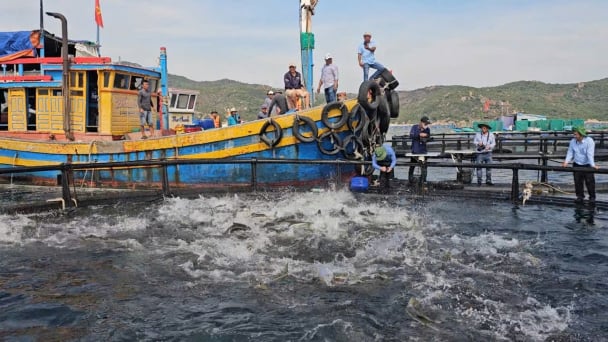
(VAN) Khanh Hoa is investing over 545 billion VND to develop 240 hectares of high-tech marine aquaculture in order to guarantee a consistent supply of seafood exports and achieve the USD 1 billion target.